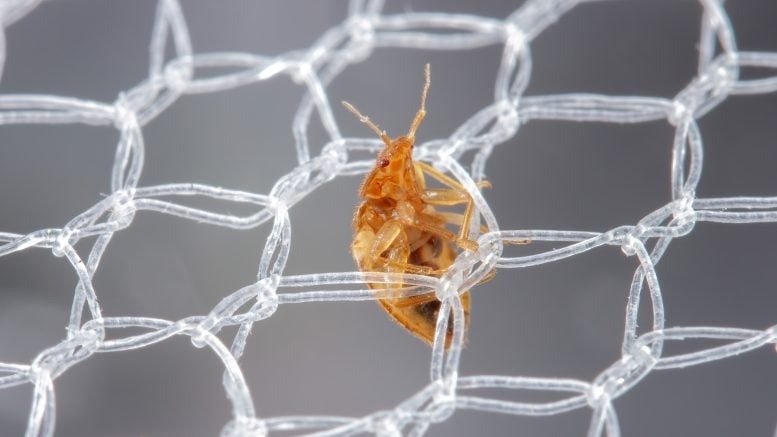
Insecticide treatments effective against malaria also suppressed household pests, but resistance among these pests has led to their return, causing community distrust and a decline in the use of these malaria control methods. Credit: Photo courtesy of Matt Bertone, NC State University.
A North Carolina State University study reveals that resistance among household pests to malaria-prevention insecticides is leading to increased distrust and abandonment of these methods, resulting in higher malaria rates. The study suggests exploring new dual-targeted treatments to overcome these challenges.
For many years, insecticide-treated bed nets and indoor spraying have been crucial and highly effective methods for controlling mosquitoes that spread malaria, a serious global health threat. These strategies have also, incidentally, helped to reduce populations of other unwanted household pests such as bed bugs, cockroaches, and flies.
Now, a new North Carolina State University study reviewing the academic literature on indoor pest control shows that as the household insects developed resistance to the insecticides targeting mosquitoes, the return of these bed bugs, cockroaches and flies into homes has led to community distrust and often abandonment of these treatments – and to rising rates of malaria.
In short, the bed nets and insecticide treatments that were so effective in preventing mosquito bites – and therefore malaria – are increasingly viewed as the causes of household pest resurgence.
Unexpected Benefits and New Challenges
“These insecticide-treated bed nets were not intended to kill household pests like bed bugs, but they were really good at it,” said Chris Hayes, an NC State Ph.D. student and co-corresponding author of a paper describing the work. “It’s what people really liked, but the insecticides are not working as effectively on household pests anymore.”
“Non-target effects are usually harmful, but in this case they were beneficial,” said Coby Schal, Blanton J. Whitmire Distinguished Professor of Entomology at NC State and co-corresponding author of the paper.
“The value to people wasn’t necessarily in reducing malaria, but was in killing other pests,” Hayes added. “There’s probably a link between the use of these nets and widespread insecticide resistance in these house pests, at least in Africa.”
The researchers add that other factors – famine, war, the rural/city divide, and population displacement, for example – also could contribute to rising rates of malaria.
To produce the review, Hayes combed through the academic literature to find research on indoor pests like bed bugs, cockroaches, and fleas, as well as papers on malaria, bed nets, pesticides, and indoor pest control. The search yielded more than 1,200 papers, which, after an exhaustive review process, was whittled down to a final count of 28 peer-reviewed papers fulfilling the necessary criteria.
One paper – a 2022 survey of 1,000 households in Botswana – found that while 58% were most concerned with mosquitoes in homes, more than 40% were most concerned with cockroaches and flies.
Hayes said a recent paper – published after this NC State review was concluded – showed that people blamed the presence of bed bugs on bed nets.
“There is some evidence that people stop using bed nets when they don’t control pests,” Hayes said.
Potential Solutions and Future Directions
The researchers say that all hope is not lost, though.
“There are, ideally, two routes,” Schal said. “One would be a two-pronged approach with both mosquito treatment and a separate urban pest management treatment that targets pests. The other would be the discovery of new malaria-control tools that also target these household pests at the same time. For example, the bottom portion of a bed net could be a different chemistry that targets cockroaches and bed bugs.
“If you offer something in bed nets that suppresses pests, you might reduce the vilification of bed nets.”
Reference: “Review on the impacts of indoor vector control on domiciliary pests: good intentions challenged by harsh realities” by Christopher C. Hayes and Coby Schal, 1 July 2024, Proceedings of the Royal Society B.
DOI: 10.1098/rspb.2024.0609
The review was supported in part by the Blanton J. Whitmire Endowment at NC State, and grants from the U.S. Department of Housing and Urban Development Healthy Homes program (NCHHU0053-19), the Department of the Army, U.S. Army Contracting Command, Aberdeen Proving Ground, Natick Contracting Division, Ft. Detrick, Maryland (W911QY1910011), and the Triangle Center for Evolutionary Medicine (257367).
[ad_2]

